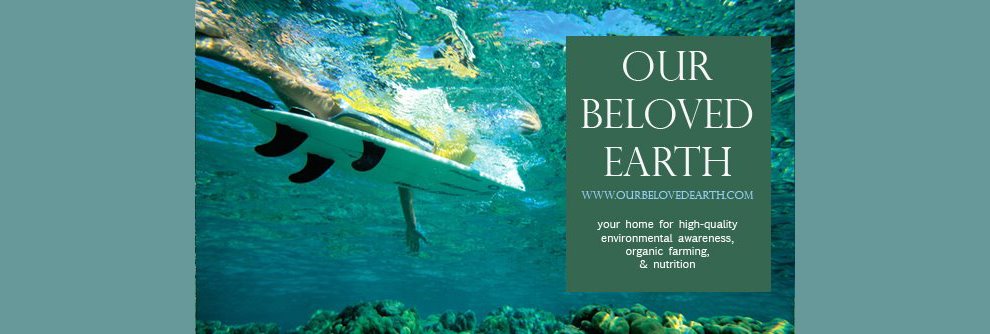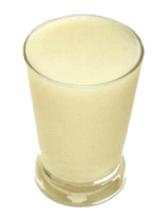High Raw Diet: What Should I Eat?
There are as many ways to eat an all raw or high raw diet as there are people. The simplest approach is the Natural Hygiene way. There are no recipes, or even any machinery. You just eat food as it comes from nature. There is a lot to be said about this easy to understand approach, and most of the time it is how I live.
How much easier can it get than to have a large bowl of fruit on the counter waiting for you and a refrigerator filled with vegetables for you to grab. Add in some coconuts, nuts, seeds and oil (Natural Hygienists tend not to eat any oil but get the small amount of fat that they eat directly from their food) and you have everything that you need.
In a few moments, you can pack up a lunch of cut up veggies, greens, whatever fruits you can find depending on the season and some nuts for protein. For those times that you want to make recipes add a few items to your pantry like almond butter, tahini, seasonings like garlic, sea weeds, basil, sea salt, and go from there.
It is difficult to describe a 'typical' raw day as there is so much variation between people, but here are some examples taken from real life.
Sample Breakfasts:
1. A pint of blueberries, or more
2. A banana, or more, sometimes many more
3. Half an avocado and a banana, blended and topped with berries
4. A fruit smoothie, with some greens blended in
Sample Snacks:
1. Several pieces of fruit during the morning
2. Some cut up veggies
3. An avocado
4. A smoothie
Sample Lunches:
1. A large salad of assorted greens, sprouts, red pepper, celery, cabbage with a large handful of soaked almonds or sunflower seeds
2. Sunflower pate rolled up in a sheet of Nori and topped with greens and sprouts
3. A blended soup consisting of greens, sprouts, avocado, yellow squash, garlic or ginger
4. A blended soup of avocado, parsnip and celery
5. A cabbage leaf with pate rolled up in it
6. A cabbage leaf with cut up veggies and some almonds on the side
7. A bag of green beans, or Peas in the pod
8. 2 avocados
9. Several pieces of celery and carrot dipped in hummus, or almond butter, or sunflower pate
Sample Dinners:
1. Spiralized yams or sweet potatoes topped with lemon and oil
2. Spiralized zucchini with pesto sauce (pine nuts, basil, garlic, olive oil, parsley) and tomato sauce (pureed tomatoes with spices or herbs that you like)
3. Raw corn chowder with sprouts and greens
4. Yam soup or beet borscht
While there are no set rules to follow, if often works out best if you eat some protein at lunch as it takes longer than other foods to digest, and complex carbohydrates at night so you can wind down, relax, and prepare for your nights rest without a lot of digestive activity going on after you retire for the night.
As for protein, many people still have the misconception that they need far more protein than they really do. If you think about mother's milk, which only contains 1.5 - 2.5 % protein perhaps you can relax a bit about your protein consumption. Growing children and athletes need the most protein. There's way more protein in dark leafy greens than most people realize. Tahini, almond butter, almonds and sunflower seeds are all quick and easy sources of protein.
If you eat large salads and fruit every day or green smoothies you are probably getting enough fiber. There aren't any raw fooders that have constipation problems. Your high raw or all raw diet should be resulting in 2-3 healthy bowel movements a day. Constipation, hemorrhoids and less than daily bowel movements are most likely an indication that you need more fiber.
Healthy fats react in your body far differently than cooked, processed, rancid unhealthy fats. All cooked oils-(French fries, doughnuts) and fats are very bad for you. When you are consuming avocados, nuts, seeds, raw nut butters, unheated flax seed oil, olive oil, hemp oil, coconuts all in the raw state they are good for you. Most likely you need some of these fats to keep your weight up also.
Great problems in health and well-being occur in the absence of the Omega 3's and 6's-the essential fatty acids that are obtainable only through food. Flax seeds and salmon both contain high amounts of the Omega 3's, followed by sunflower seeds. I prefer my Omega 3's in the form of flax seeds or oil, as I have a personal aversion to consuming mercury that is found in one level or another in all fish. It is far more common to be deficient in Omega 3's than other good fats and when first starting out I recommend concentrating on consuming high Omega 3 rich foods for the first year you are raw. An excellent resource to learn what you need to know about fats is: Fats That Heal, Fats That Kill, by Udo Erasmus.
I have found that most beginners and even more experienced raw fooders are afraid to consume fats. Just today I received a note from someone who wants to try raw food, but wants to keep their fats to 10% and to be sure to have 'enough protein'. What they are trying to do is follow their cooked food approach (in this case the Dr. Dean Ornish program) while doing raw. Well, many people have much improved health while following the cooked food Dr. Dean Ornish program-and it is pretty obvious why-if cooked fat kills, then only 10% of it in your diet harms less. There are lower calories in the program, smaller portions. But it is just about impossible to take any current program and apply it to a raw program. Everything changes when you take the raw food approach. What used to harm is now good for you in the uncooked state. So, don't fear the fat! Just keep all your fat consumption the healthy kind-if you eat any cooked food, be sure it is not cooked fat. Isn't that simple?
As for calories-if you are too thin, you aren't getting enough. If two salads a day don't provide enough calories for you, then condense your food into a soup or a smoothie, adding in tahini or other high calorie yummies. You athletes out there already know how to make Vanilla Bliss out of water, frozen banana and tahini-up to four tablespoons in a shake, to keep the calories up. You can make avocado or tahini based soups, or drink almond milk-there's many ways to meet your calorie needs consistently with an all raw diet.
Before I move on to a fun cracker recipe, there's one more important item I want to mention. You need variety in your diet. Making the same thing every day out of habit or convenience is a very unhealthy habit. Think of the rainbow when you make your foods; be sure that on a daily basis you are eating from many of the colors of the rainbow: purple, red, orange, green and yellow. Each food contains its own gift for you, packaged by the Creator in just the right way to be sure you are taking in all the necessary nutrients. It's hard to go wrong if you choose from a very wide assortment of foods.
Following is a recipe that will help to round out your meals and snacks.
If you own a dehydrator or have enough warm sun here is a tasty flax seed cracker recipe. I like these crackers because they travel well and also because of the great crunch they provide. Flax seeds provide wonderful fiber and important Omega 3 oils. Soak 5 or 6 cups of organic brown or golden flax seeds in 5 or 6 cups of water for about 4-5 hours. This will turn into a solid mass.
Puree any or all of the following in a blender: 6 or 7 tomatoes, one or two onions, garlic, 2-6 tablespoons lemon juice, sea salt, soaked sun dried tomatoes, spices and herbs that you like. Fill the blender to the top-about 7-8 cups. Mix the blended mixture into the flax seed mixture. (Do not blend; you want to leave the flax seeds whole.) Add caraway seeds or fennel seeds or dried onion bits if you like.
Pour onto the liners in your dehydrator trays, and spread with your hand until even, this will be about ź inch thick. Dehydrate, turning over when dry on top, and remove the liners when you can. Score the crackers (cut almost all the way through) when almost dehydrated on both sides. Or allow to completely dehydrate then break into bite size crackers. Store in a tightly closed jar or cookie tin. These will keep indefinitely. Makes about 100 crackers.
Each time you make them experiment with the flavors until you find your personal favorite. Be generous with your seasoning as the flax seeds make everything very bland. Besides just having on hand for munching and to add some texture and fun to your meals, you can break up one or two and toss in your salad as croutons, or you can top a cracker with slices of cucumber, tomato and onion bits for a tasty meal or snack.
Note: start your dehydrator at 120 or 125; turn it down to 115 once you feel the crackers are getting warm. The food never reaches the temperature the thermostat is set at, it is dangerous to dehydrate food at too low a temperature, like 90, it takes too long, allowing mold to form in the food.
The Raw Gourmet
PO Box 160
Bonsall CA 92003




 ½ cup almonds, soaked and hulled
½ cup almonds, soaked and hulled



















